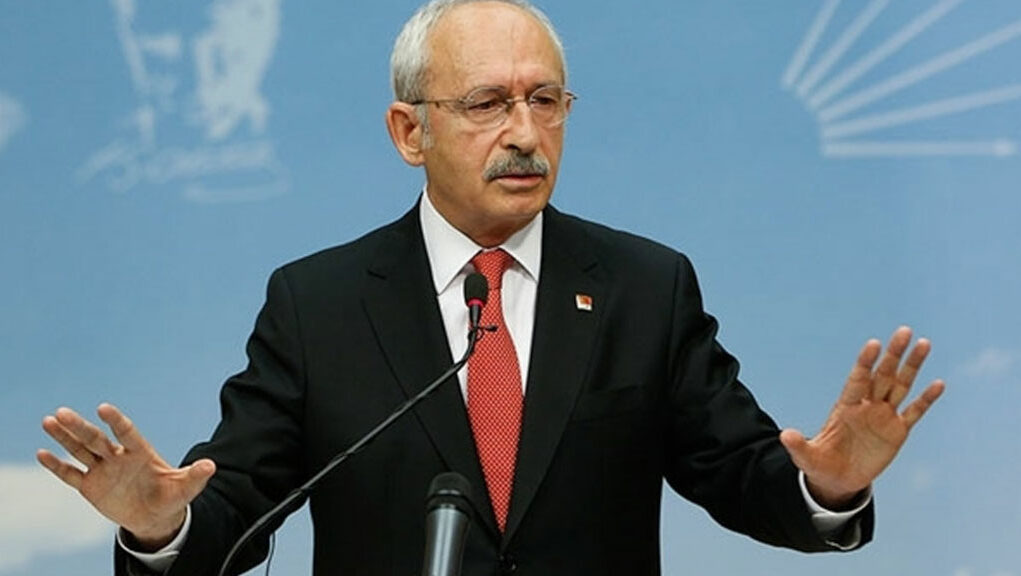(Bloomberg) -- The US Department of Energy is asking Congress for funding to create a domestic source of enriched uranium, calling the country’s reliance on Russian imports a “vulnerability” for both national and economic security.
The letter from Energy Secretary Jennifer Granholm comes as the Biden administration continues to weigh slapping sanctions on Russia’s state-owned atomic energy company, Rosatom Corp., in response to the Kremlin’s invasion of Ukraine.
Rosatom is the world’s biggest supplier of nuclear fuel and reactors, while Russia overall supplies more than 50% of global enriched uranium. Meanwhile, US enrichment capacity has waned after being undercut by state-subsidized competition, Granholm said in the letter, which was sent Friday to Senator Joe Manchin, the powerful moderate Democrat who chairs the Senate Energy and Natural Resources Committee.
“We should take steps to address this vulnerability and build a stronger domestic nuclear fuel supply for the future,” Granholm wrote in the letter, which asked for more investment to boost domestic manufacturing of low-enriched uranium as well as other forms of uranium needed for some advanced nuclear reactors.
Manchin of West Virginia, a key-swing vote who is playing a central role in Democrats’ efforts to pass Biden’s spending plan, has also endorsed increasing funding for domestic enrichment of the nuclear reactor fuel.
The US only has one remaining commercial enrichment facility, in New Mexico, which is owned by Urenco Ltd., a British, German and Dutch consortium. Bethesda, Maryland-based Centrus Energy Corp. is constructing an enrichment facility in Ohio.
“The Russian invasion of Ukraine and the corresponding impacts on global fuel supplies have cast into sharp relief the threat to global energy security from dependence on Russian-supplied fuels,” Granholm wrote.
©2022 Bloomberg L.P.
Unloved since Fukushima, uranium is hot
again for miners
Reuters
Praveen Menon and Sonali Paul
Publishing date: May 20, 2022
SYDNEY/MELBOURNE — Uranium miners are racing to revive projects mothballed after the Fukushima disaster more than a decade ago, spurred by renewed demand for nuclear energy and a leap in yellowcake prices after Russia’s invasion of Ukraine.
Spot prices for uranium have doubled from lows of $28 per pound last year to $64 in April, sparking the rush on projects set aside after a 2011 earthquake and tsunami crippled Japan’s Fukushima nuclear power plant
“Things are moving very quickly in our industry, and we’re seeing countries and companies turn to nuclear with an appetite that I’m not sure I’ve ever seen in my four decades in this business,” Tim Gitzel, CEO of Canada’s Cameco, which mothballed four of its mines after Fukushima, said on a May 5 earnings call.
Uranium prices began to rise in mid-2021 as several countries seeking to limit climate change said they aimed to move back to nuclear power as a source of carbon-free energy.
A quest for secure energy supplies has added to the potential demand.
Unrest in January in Kazakhstan, which produces 45% of primary global uranium output, had already driven prices further when Moscow’s Feb. 24 invasion of Ukraine spurred a 50% rally.
Russia accounts for 35% of global supply of enriched uranium.
Prices have retreated since a peak in April, but John Ciampaglia, CEO of Sprott Asset Management, which runs the Sprott Physical Uranium Trust, told Reuters Moscow’s invasion had “shifted the energy markets dramatically.”
“Now the theme is about energy security, energy independence and trying to move away from Russian origin energy supply chains,” he said.
There are about 440 nuclear power plants around the world that require approximately 180 million pounds of uranium every year, according to the World Nuclear Association.
Uranium mines produce about 130 million pounds, a deficit that mining executives predict will widen even if idled capacity by major producers such as Cameco and Kazakhstan’s Kazatomprom comes back online.
The supply gap used to be filled by stockpiled material, much of which came from Russia.
Now, miners are dusting off feasibility studies for mothballed mines and reviving projects.
In Australia, uranium producers – including Paladin Energy Ltd which aims to restart its Langer Heinrich uranium mine in Namibia, idled over a decade ago – have raised close to A$400 million ($282.08 million) in share sales over the last six months to fund exploration and resuscitate mines on three continents.
“With all of the additional demand that’s coming from the new nuclear (plants), the thesis is that over a five or 10-year period, that additional demand will just dwarf those volumes coming back to market,” said Regal Funds Management analyst James Hood.
China plans to build 150 new reactors between 2020 and 2035 and Japan also aims to boost nuclear capacity as does South Korea.
In Europe, Britain has committed to build one new nuclear plant every year while France plans to build 14 new reactors and the European Union has proposed counting nuclear plants as a green investment.
EASIER SAID THAN DONE?
Delivering the new reactors, however, will be a challenge as repeated delays and cost-overruns could be exacerbated by the supply chain problems following the pandemic and the additional disruption of the Ukraine war, making demand for uranium hard to predict.
Many environmental campaigners, especially in the West, also remain opposed to nuclear energy because of the waste it generates even though atomic power is emissions-free.
Advocates of nuclear energy say small modular reactors are a solution to the difficulty of bringing on new capacity.
Keith Bowes, managing director of Lotus Resources, which owns the idled Kayelekera uranium mine in Malawi, says modular reactors will be a major source of growth from 2028 onwards.
Others say the traditional obstacle of high cost is less of a problem given the sharpened focus on security of supply.
“No longer is price the determinant, it’s now security of supply,” Duncan Craib, managing director at Boss Resources told the Macquarie Australia conference on May 9.
Boss will make a final investment decision soon on developing the Honeymoon uranium mine in South Australia, aiming for first production 18 months after any go-ahead.
Sprott’s Ciampaglia said uranium could hit $100 per pound in the long run. Prices peaked around $140 per pound in 2007.
This year’s rally has taken them to levels last seen in 2011 in part as a result of Sprott’s activity in the market with its uranium funds growing from near zero last year to about $4 billion now.
Ciampaglia said Sprott’s buying is in response to investor demand: “The Trust provides investors with a vehicle to express their view on physical uranium.”
Smaller uranium developers also want to get involved, but will need prices of at least $60 a pound to ensure the economic viability of projects, industry watchers said.
Even then there would be risks. The restart of idled capacity from uranium giants could disproportionately hit smaller players while community opposition in some areas remains.
“No mine development or restart of an idled mine is easy or without challenges,” said Guy Keller, manager of Tribeca Investment Partners’ Nuclear Energy Opportunities Fund.
($1 = 1.4180 Australian dollars)
(Reporting by Praveen Menon and Sonali Paul; editing by Barbara Lewis)
The West Desperately Needs To Invest In
Uranium Mining
Editor OilPrice.com
Tue, May 24, 2022
The European Union, the United States, and their Asia-Pacific allies have been on a sanction crusade against Russian for three months now. Energy was not the first target of sanction action, but it has risen to the top of the agenda now. And nuclear is no exception.
While sanctions on Russian oil and gas have taken up the most headline space, Russia is a big player in nuclear power as well, which has raised concern about the security of uranium supply—specifically enriched uranium supply.
The World Nuclear Association says Russia supplies over a third of the world's enriched uranium and has the biggest enrichment capacity globally. China comes second in terms of capacity.
According to a fresh report from the Columbia University's Center on Global Energy Policy, however, Russia's share of global uranium enrichment capacity is greater, at 46 percent as of 2018. And that, according to the authors, might become a problem unless countries that have Russian-technology nuclear reactors start preparing now.
The preparations would basically come down to boosting uranium enrichment elsewhere—France, China, the U.S., and Canada have substantial enrichment capacity that they are under-utilizing—and fuel replacement, where possible.
According to the authors of the report, Russian VVER reactors can work with non-Russian fuel, the closest analog being produced by U.S. Westinghouse. A Bulgarian nuclear energy government consultant recently said Russian nuclear fuel is being successfully replaced at the Czech power plant Temelin and Bulgaria's Kozloduy.
Power plant maintenance could be a problem in case sanctions target Russia's nuclear power industry because Russia-made VVER reactors can only be serviced by Rosatom staff. Equipment replacement during repairs has alternatives due to other countries with well-developed nuclear industries, including France and the Czech Republic in Europe.
Yet, according to some, sanctions on Russian nuclear power may not come anytime soon. And this is because although Russia is not among the largest producers of uranium, it is one of the biggest exporters of enriched uranium.
According to a report published recently in the Bulletin of the Atomic Scientists, Russia exported $13 billion worth of mineral fuels in 2019, including uranium and enriched nuclear fuel. In 2020, Russian uranium represented 16 percent of the uranium that U.S. power plants purchased. In Europe, this percentage was even higher, at 20 percent. The problem is that alternative suppliers are few and far between.
On the other hand, these few suppliers—of uranium—are large enough, it seems, to step in and replace Russian uranium. Swedish Vattenfall, for instance, stopped its purchases of Russian nuclear fuel on February 24. The power company buys its uranium from places like Kazakhstan, Namibia, Canada, and Australia—all major producers, and would only need to process and enrich it somewhere, which could be, for example, China.
In the U.S., some are calling for the buildout of local processing and enrichment capacity in order to reduce the country's dependence on Russian fuel, but it will come at a cost—some $1 billion.
"We need to build out capacity for a Western alternative for the Russian component of the uranium market, including conversion and enrichment capacity," Kathryn Huff, a senior adviser to Energy Secretary Jennifer Granholm, told the Senate Energy and Natural Resources Committee in March, as quoted by Bloomberg. "There is no question in my mind that we will continue to focus on uranium as an incredibly important fuel."
And then there is the time issue because the buildout of processing and enrichment capacity is not something you can do in a week, rather like the construction of liquefied natural gas import terminals. These things take years.
"More investment in mining, conversion, and enrichment facilities may be necessary to fully extricate Western nuclear fuel chains from Russian involvement," wrote Paul Dabbar and Matt Bowen, the authors of the Columbia University report. "However, adding sufficient new conversion capacity and enrichment capacity will take years to accomplish."
By Irina Slav for Oilprice.com












